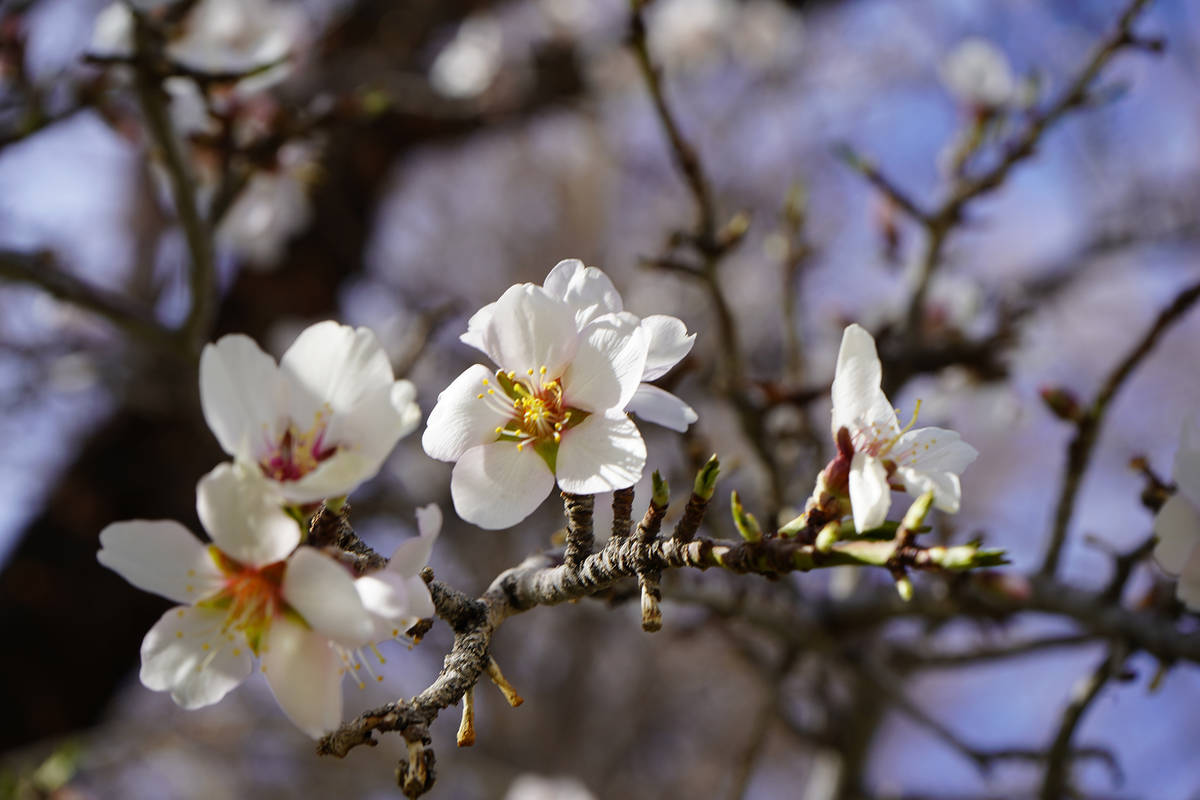Southern Nevada birders flock to Corn Creek in springtime

Flashes of spring color can be spotted now at Corn Creek in the Desert National Wildlife Refuge, where vibrant winged visitors might include the blue grosbeak, Townsend’s warbler and summer tanager.
Those primary-colored birds in past years have made stops at this Southern Nevada patch of greenery for rest and refueling during their flights from winter homes in Mexico and farther south.
April and May are months when hopeful Southern Nevadans flock for glimpses of birds attracted to Corn Creek because of its naturally flowing spring waters, nutritious bug-and-seed food and protective tree spaces. Migrating birds are passing through en route to places like the Oregon coast and Alaska. In some cases, birds such as Lucy’s and yellow warblers are arriving to nest and summer in the Las Vegas area.
Whether they linger for months or leave quickly to carry on their journey, spring birds at Corn Creek play roles in a remarkable story about creatures whose weights are quantified in grams and flights are measured in thousands of miles. These migratory birds mix with desert dwellers that make Corn Creek their year-round home.
Historically, some 320 species of birds have been recorded at the Desert National Wildlife Refuge, the largest wildlife refuge in the Lower 48. It encompasses 2,300 square miles and six mountain ranges, including the peaks visible to the north of Las Vegas known as the Sheep Range.
Corn Creek is about 30 minutes north of Las Vegas, off U.S. Highway 95 after the Kyle Canyon turnoff and before the Lee Canyon turnoff. A highway sign for the Desert National Wildlife Refuge alerts drivers to turn onto Corn Creek Road, which leads to the refuge’s visitor center after about 4 miles.The visitor center remains closed amid the COVID-19 pandemic, but exhibits inside are worth a future visit to help with an understanding of the area’s human history as well as the survival stories of the refuge’s bighorn sheep, birds and other animals.
Birding serendipity
Bird identification skills and expensive binoculars are not required for an enjoyable time along the easy trails at Corn Creek. Time is well spent for anyone in the shady grove and orchard of a former ranch site behind the visitor center. Paths lead through greenery, past aging fruit trees and along a stream with its soothing sounds and possible bird-bathing sightings.
Spotting birds and hearing their songs is easy enough in this desert oasis, and identification doesn’t necessarily matter when the objective of the day might be to simply catch some of nature’s beauty.
Even when identification skills are good, birding offers no guaranteed sightings. It’s an exercise in optimism that some species worth seeing will be spotted on any given day, especially during the early morning hours.
An observant eye and patience are always needed to get good looks at birds darting about in tall trees or foraging in thick desert bushes. Throughout spring, different species arrive at different times, so many local birders make multiple trips to Corn Creek in April and May.
Serendipity plays a role in any birding adventure, but it’s possible to get an idea of what may be hanging out at Corn Creek by checking eBird, an online source that includes checklists submitted by area birders. Corn Creek is at the top of birding destinations listed for Nevada by eBird, which is managed by the Cornell Lab of Ornithology.
An ever-changing cast
“Because this is a migrant trap,” local birder Jeanne Tinsman explained about Corn Creek’s history of attracting larger-than-normal concentrations of migrating birds, “the possibility of finding a rarity is increased. … You never know what you will find; the cast of characters is ever-changing. One day is never like the previous, or the next.”
At times, migrating birds lose their way or get blown off course by weather events, so unusual birds show up at Corn Creek. Tinsman recalled once “walking the trail, round and round, trying to find the warbler singing an unfamiliar song.” Her persistence paid off when she finally spotted an uncommon visitor from the Eastern U.S., a hooded warbler.
That’s the kind of bird that will attract a flock of birders who wish to see and photograph something they may never see again in Southern Nevada (if you see such an equipment-laden group, quietly approach to see what everyone’s excited about).
The sounds of spring are a highlight for Tinsman, who looks forward to hearing the songs of Lucy’s warblers and blue grosbeaks, among other birds that nest in the area.
“The beginning of the breeding season is always special, when the birds that spend the summer set up their territories, delineating them with song,” said Tinsman, whose passion for birds combines with a resume filled with bird-related work across the country.
Corn Creek’s inspiring melodies from the Bewick’s wren, warbling vireo, Lucy’s warbler and black-headed grosbeak. The vibrant feathers of the lazuli bunting, Western tanager and vermillion flycatcher. If bold feathers and bright musical notes are in your thoughts on the drive home from Corn Creek, it might be time to buy a bird identification guide to study in anticipation of fall migration.